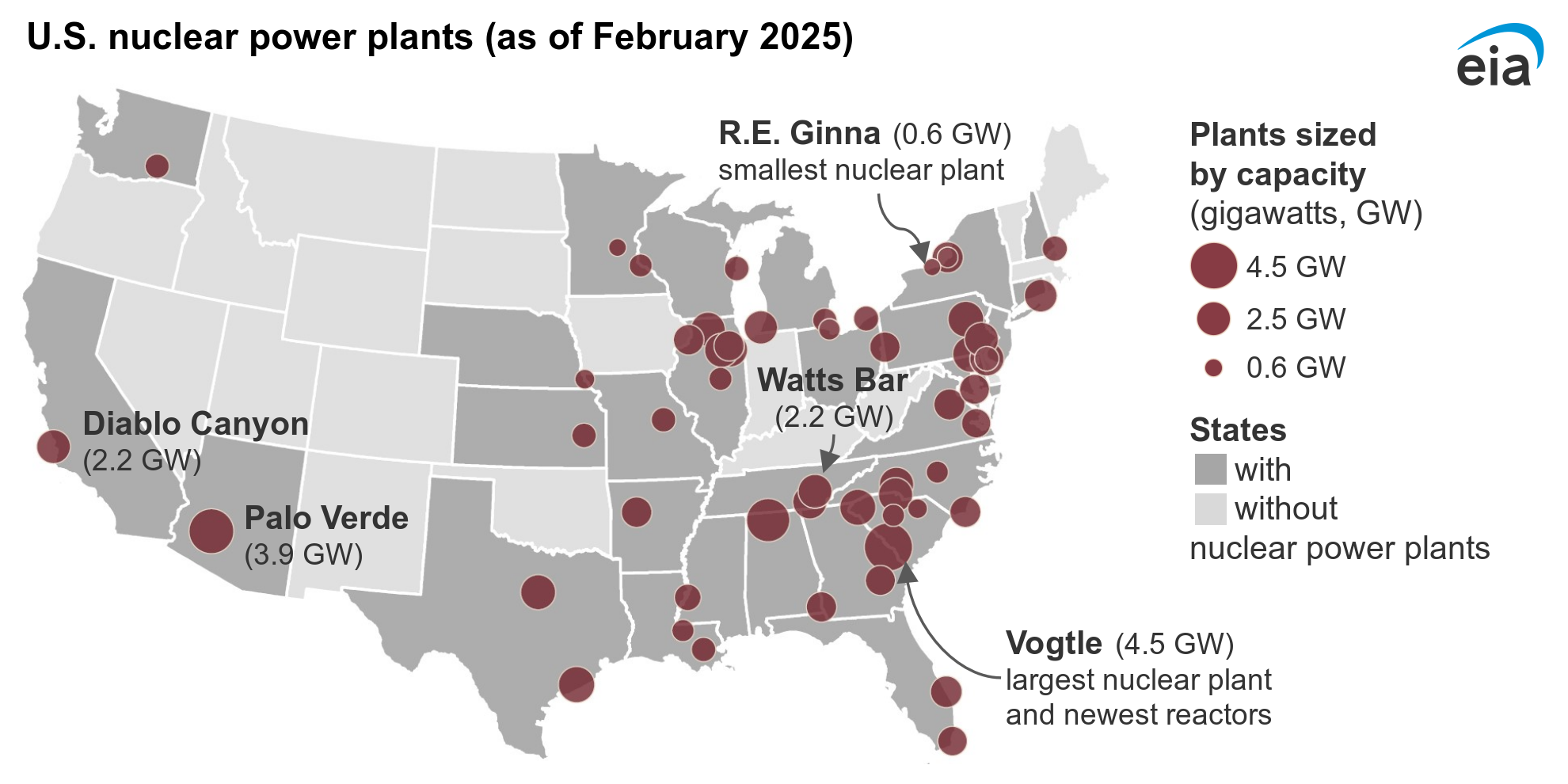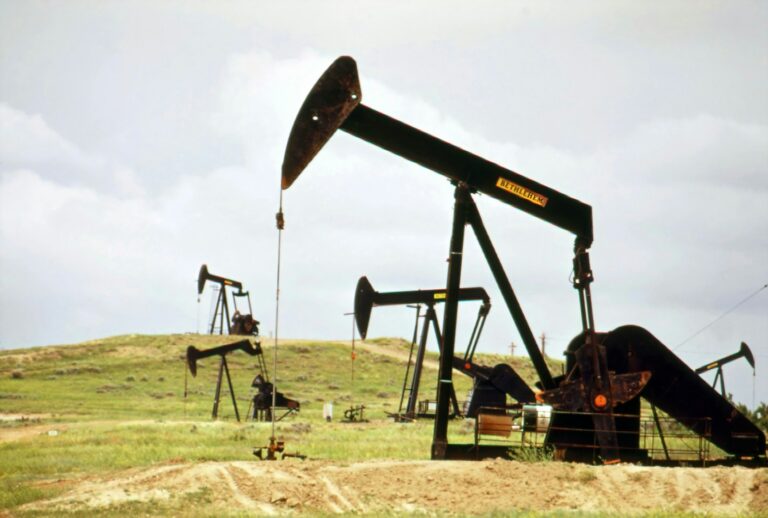The United States operates the world’s largest nuclear power plant fleet
When you turn on a light, charge your phone, or run your air conditioner, there’s a 1 in 5 chance that the electricity comes from a nuclear power plant. The United States has more nuclear reactors than any other country, and they provide a huge amount of reliable, carbon-free electricity every day.
But how exactly does nuclear power work in the U.S.? Why do some people support it while others worry about its risks? And what does the future hold for this major energy source?
Let’s break it down in simple terms.
The U.S. Nuclear Fleet at a Glance
As of 2024, the United States operates 94 commercial nuclear reactors across 54 power plants, with a combined net summer capacity of 97 gigawatts (GW). These reactors generate nearly 20% of the nation’s electricity, making nuclear the second-largest source of clean energy after hydropower.
How the U.S. Compares Globally
The U.S. nuclear program is significantly larger than those of other leading countries:
- France (63.0 GW) – Heavily reliant on nuclear, generating about 70% of its electricity.
- China (55.3 GW) – Rapidly expanding its nuclear capacity with new reactor construction.
- Russia (28.6 GW) – Exports nuclear technology but has a smaller domestic fleet.
Unlike France, where nuclear dominates the grid, the U.S. maintains a diverse energy mix, with natural gas and renewables playing major roles. However, nuclear remains essential for grid stability and emissions reduction.
Key U.S. Nuclear Power Plants
1. Plant Vogtle (Georgia) – The Largest in the U.S.
- Capacity: 4.5 GW (four reactors).
- Recent Expansion: Two new reactors (Units 3 & 4, 1.1 GW each) came online in 2023 and 2024, making Vogtle the biggest nuclear plant in the country.
- Significance: These are the first newly built reactors in the U.S. in over 30 years, marking a major milestone for the industry.
2. Palo Verde (Arizona) – Formerly the Largest
- Capacity: 3.9 GW (three reactors).
- Unique Feature: Located in a desert, it uses treated wastewater for cooling—unlike most coastal plants.
3. R.E. Ginna (New York) – The Smallest Plant
- Capacity: 0.6 GW (one reactor).
- Role: Provides baseload power to upstate New York and helps stabilize the grid.
Challenges and Resilience in the U.S. Nuclear Sector
Plant Closures and Economic Pressures
Since 2013, 12 reactors have permanently shut down, primarily due to:
- Competition from cheap natural gas.
- High operating costs and regulatory burdens.
- Local opposition in some states.
However, despite these closures, the remaining fleet has maintained strong performance:
- Capacity factors (a measure of operational efficiency) have improved due to:
- Shorter refueling and maintenance outages.
- Better operational experience and upgrades.
Policy Support for Nuclear Power
To prevent further shutdowns, federal and state governments have introduced measures to preserve existing reactors:
- Diablo Canyon (California): Scheduled to close in 2025, it received federal credits in 2024 to extend operations due to its role in grid reliability (providing 9% of California’s electricity).
- Palisades (Michigan): Shut down in 2022, but the DOE approved a loan in 2024 to restart it—potentially making it the first U.S. reactor to reopen after retirement.
The Future of U.S. Nuclear Power
1. Advanced Reactor Development
The U.S. is investing in next-generation nuclear technologies, including:
- Small Modular Reactors (SMRs): Smaller, more flexible designs (e.g., NuScale’s project in Idaho).
- Advanced Reactors: High-temperature and molten-salt reactors for improved safety and efficiency.
2. Role in a Decarbonized Grid
As the U.S. aims for net-zero emissions by 2050, nuclear power is expected to:
- Provide 24/7 carbon-free electricity to complement intermittent renewables.
- Support hydrogen production and industrial decarbonization.
3. Challenges Ahead
- High construction costs for new reactors.
- Public perception and waste disposal concerns.
- Competition from renewables and storage technologies.
Tracking U.S. Nuclear Power: Key Data Sources
The U.S. Energy Information Administration (EIA) provides detailed insights through:
- Electric Power Monthly/Annual – Generation and capacity statistics.
- Hourly Electric Grid Monitor – Real-time grid status.
- Nuclear Outages Dashboard – Daily reactor operational status.
Conclusion
The United States remains the global leader in nuclear power, with a fleet that delivers reliable, large-scale clean energy. While challenges like plant closures and high costs persist, policy support and new technologies could ensure nuclear’s role in a low-carbon future. As the energy transition accelerates, nuclear power may prove indispensable in maintaining grid stability and reducing emissions.







